Try Default

See how revenue teams automate revenue operations with Default.

Key Takeaways
- Default is the most complete solution for RevOps teams looking to unify routing, enrichment, and scheduling under one roof — ideal for scaling inbound pipeline with speed and control.
- Apollo.io is the go-to for outbound sales teams that need fast, cost-effective prospecting without buying multiple tools for sequencing and data.
- Clearbit is built for data-driven marketers who want to personalize site experiences and enrich leads in real time using intent and firmographic insights.
- MadKudu excels for PLG and high-volume inbound teams who need to prioritize leads based on behavior, fit, and revenue potential — not static MQL scoring.
Here’s how most go-to-market teams break:An inbound lead comes in. It hits the CRM — missing key data. Someone builds a Zap to enrich it. A calendar link gets emailed. No one follows up fast enough.
Multiply that by 100 leads a day, and you’ve got a GTM engine leaking revenue from every seam.
It’s not just one tool’s fault — it’s the fragmentation between enrichment, routing, and scheduling. Each lives in a different system. None of them talk well. And your reps are stuck waiting on ops tickets while leads go cold.
This guide isn’t a roundup — it’s a fix. We’ve handpicked 12 platforms not for their features, but for how they improve execution where most teams break. Whether you’re scaling fast or replacing brittle workflows, you’ll find the tool (or system) that turns GTM from patchwork into pipeline.
GTM software comparison table (2025)
Default: best GTM software for inbound orchestration at scale
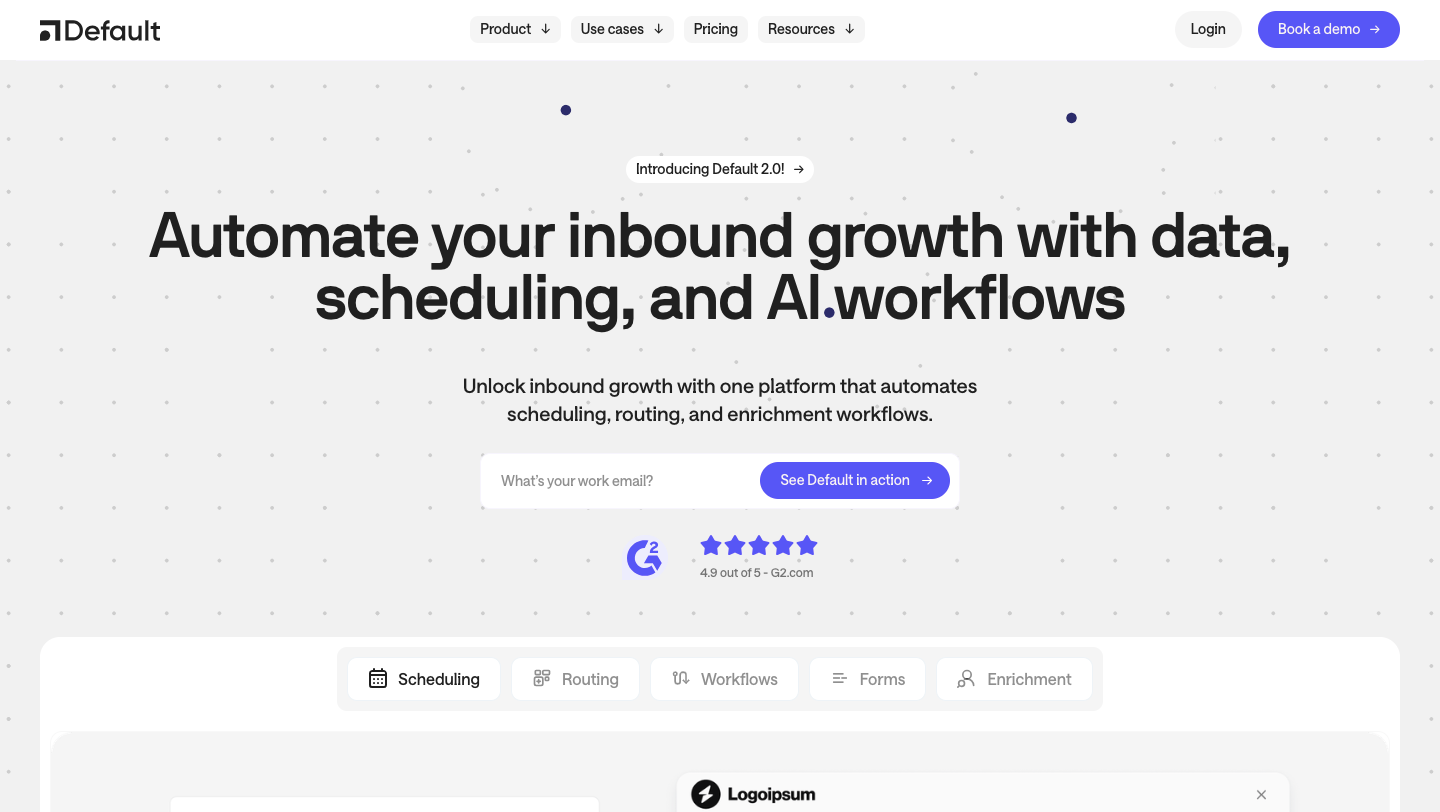
Default is the GTM orchestration platform built to replace piecemeal inbound workflows with one unified, RevOps-owned system. Instead of stitching together scheduling links, enrichment tools, and routing logic through brittle integrations, Default gives you a single interface to control it all — no code required.
It’s purpose-built for high-velocity teams where speed-to-lead matters, GTM coordination breaks easily, and engineering resources are scarce. With Default, inbound leads are enriched, routed, and booked in seconds — no rep delay, no lost context, no workflow hacks.
Key features
Default unifies three core GTM functions — routing, enrichment, and scheduling — into a single platform that RevOps can own without engineering. Each function is modular but tightly integrated for compounding efficiency.
No-code lead routing
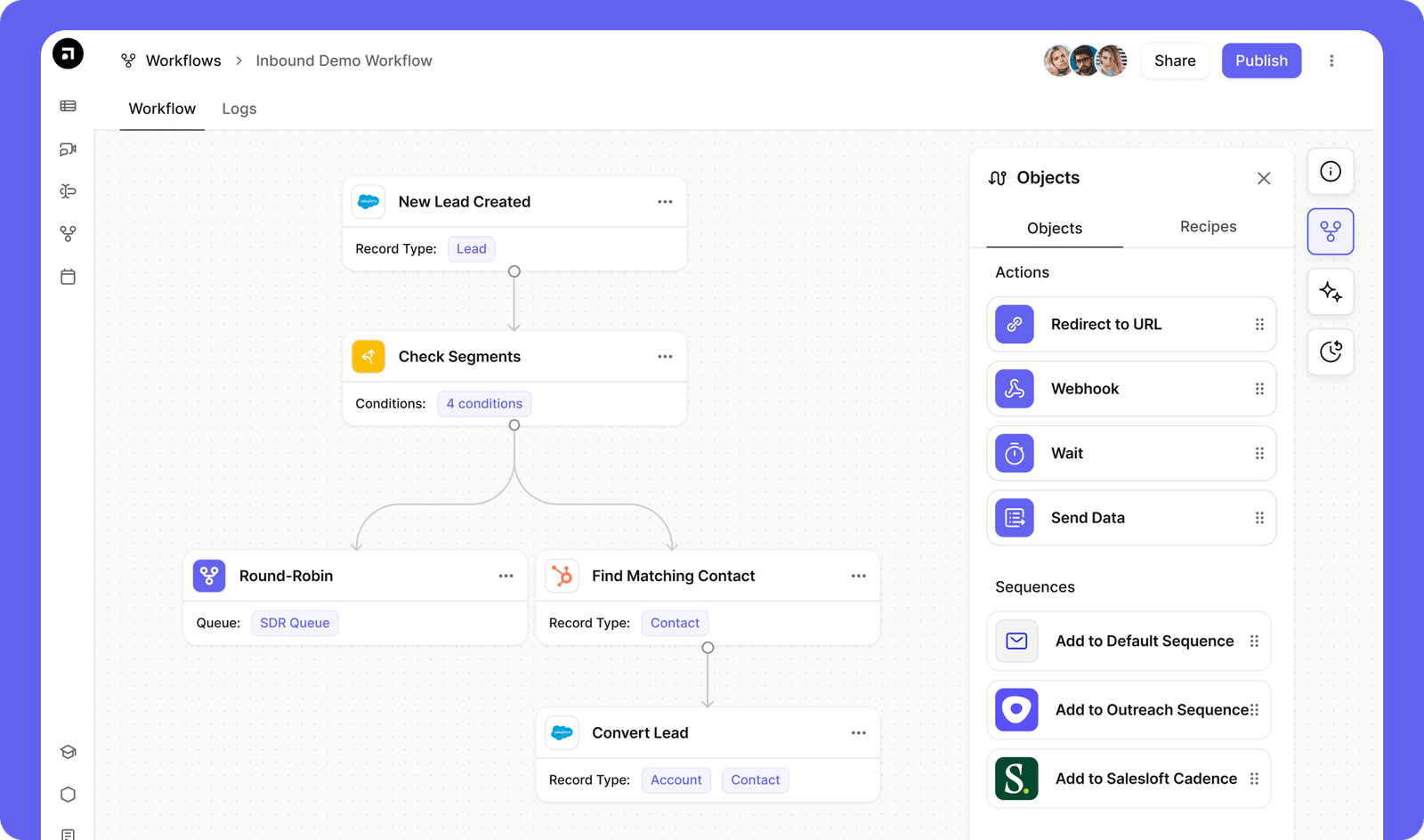
Assign leads in real time based on territory, ownership, intent signals, or any CRM field — all through a visual drag-and-drop builder. Default replaces clunky flow logic with an intuitive system that makes auditing and iteration fast.
Why it matters: RevOps teams don’t have time to wait on engineering or manually debug misrouted leads. Default puts control where it belongs — in the hands of ops.
Real-time form enrichment
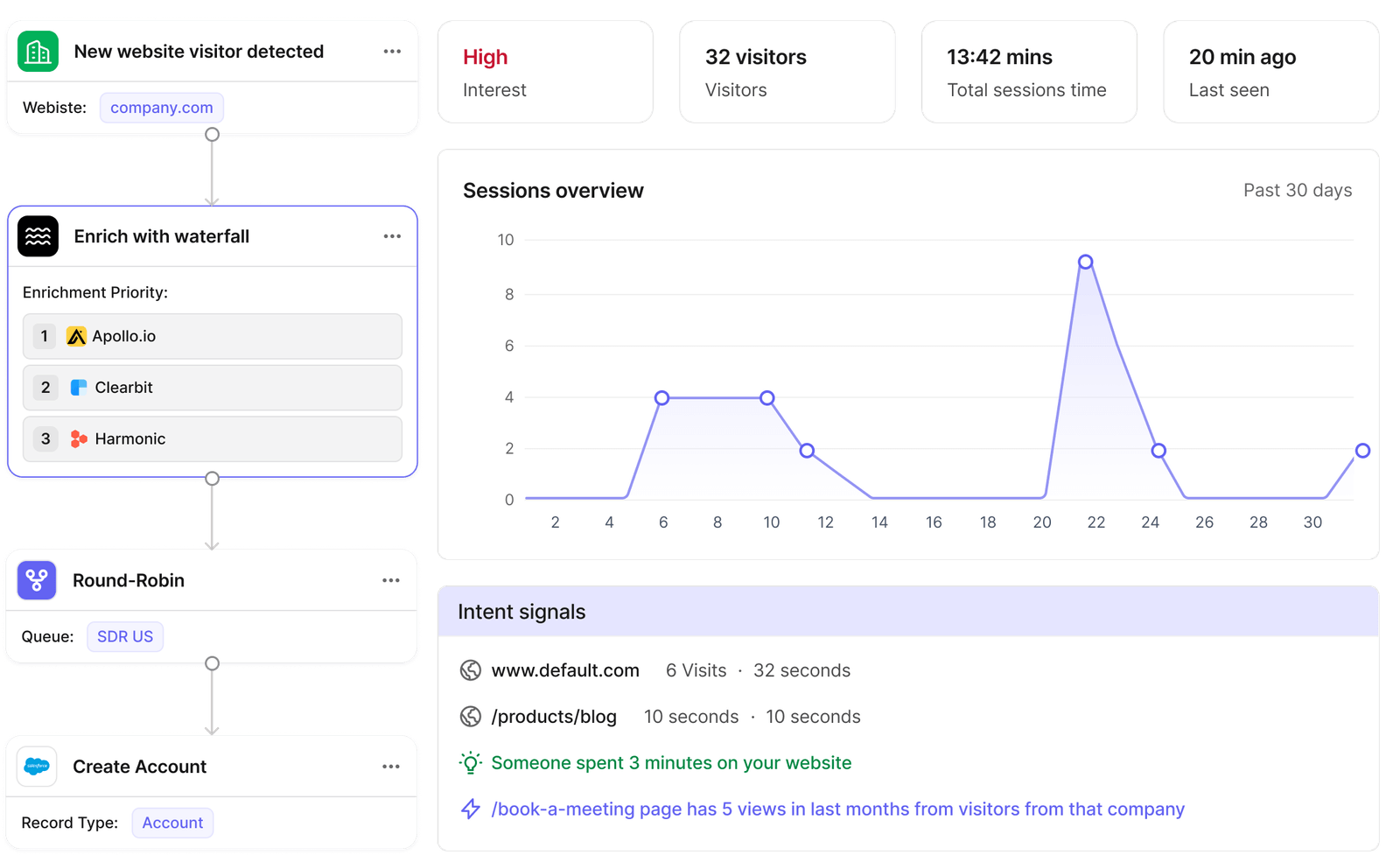
Default enriches inbound leads instantly at the moment of form fill, using a waterfall of data sources to add firmographic and contact-level insight. This means fewer required fields, faster form completion, and clean data before it hits your CRM.
Why it matters: Most form enrichment still happens post-submission or inside CRMs — which means GTM workflows start with incomplete data. Default flips that.
Embedded scheduling
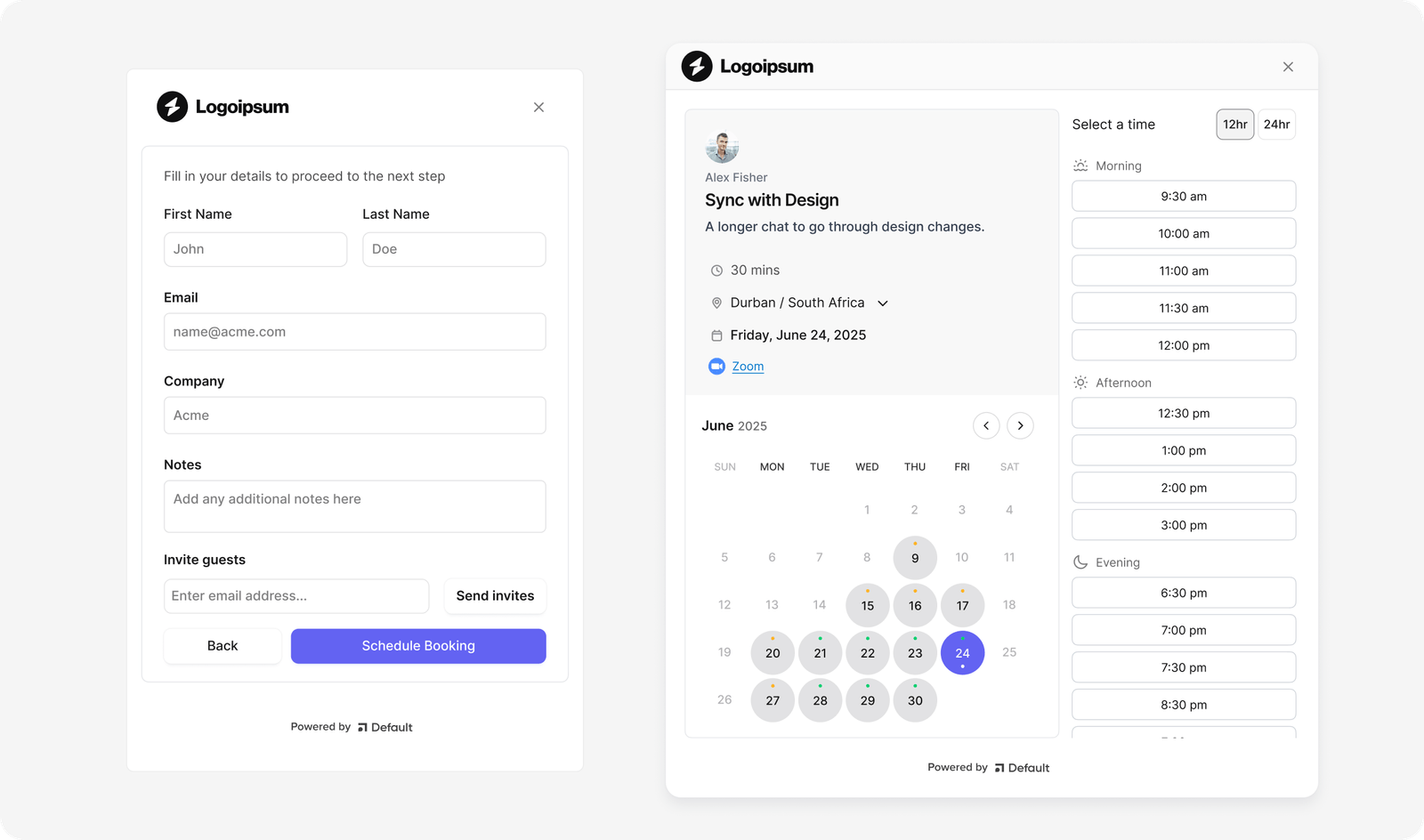
Default embeds a smart scheduler into your forms, instantly assigning the right rep and letting prospects book time in a single flow. No follow-up emails, no lost intent, no drop-off.
Why it matters: Speed-to-meeting is one of the strongest predictors of conversion. Default makes it instant — and owned entirely by your ops team.
Pricing
Note: Default’s pricing model separates platform and usage fees—you only pay for revenue-contributing users. Editor seats are free.
Where Default shines
- Full-stack inbound orchestration: Routing, enrichment, and scheduling are all handled in one flow, reducing handoff risk and latency.
- Ops-led agility: Everything can be changed, updated, or tested without writing code or opening tickets.
- Conversion-ready workflows: The second a form is submitted, leads are enriched, routed, and booked — maximizing intent and minimizing loss.
Where Default falls short
- CRM integration is required: Without Salesforce or HubSpot connected, you won’t unlock Default’s full automation capabilities.
- No freemium tier: This isn’t a self-serve tool — it’s built for teams ready to invest in GTM systems infrastructure.
Customer reviews
“We discovered Default through a post we noticed on Linkedin as we were getting our GTM motion off the ground and implemented it from Day 1 of spinning up sales on our team. The implementation took < 15 minutes and the team has been incredibly responsive to taking our feedback and building new features that support us (sometimes in less than a day!)” - verified G2 reviewer
“Most helpful thing for us about Default was being able to get going with the need for any technical support or engineering time. We swapped the link on our website over to our Default form, and were pushing leads into Hubspot in minutes.” - Ben D., verified G2 reviewer
Who Default is best for
- RevOps teams replacing duct-tape logic: Especially those tired of Zapier, Salesforce Flow, and calendar hacks.
- Inbound-heavy GTM motions: Where speed-to-lead, enrichment quality, and rep booking make or break conversion.
- Growth-stage orgs scaling fast: Who need conversion-ready workflows and cannot afford workflow fragility.
Apollo.io: best for outbound prospecting at scale
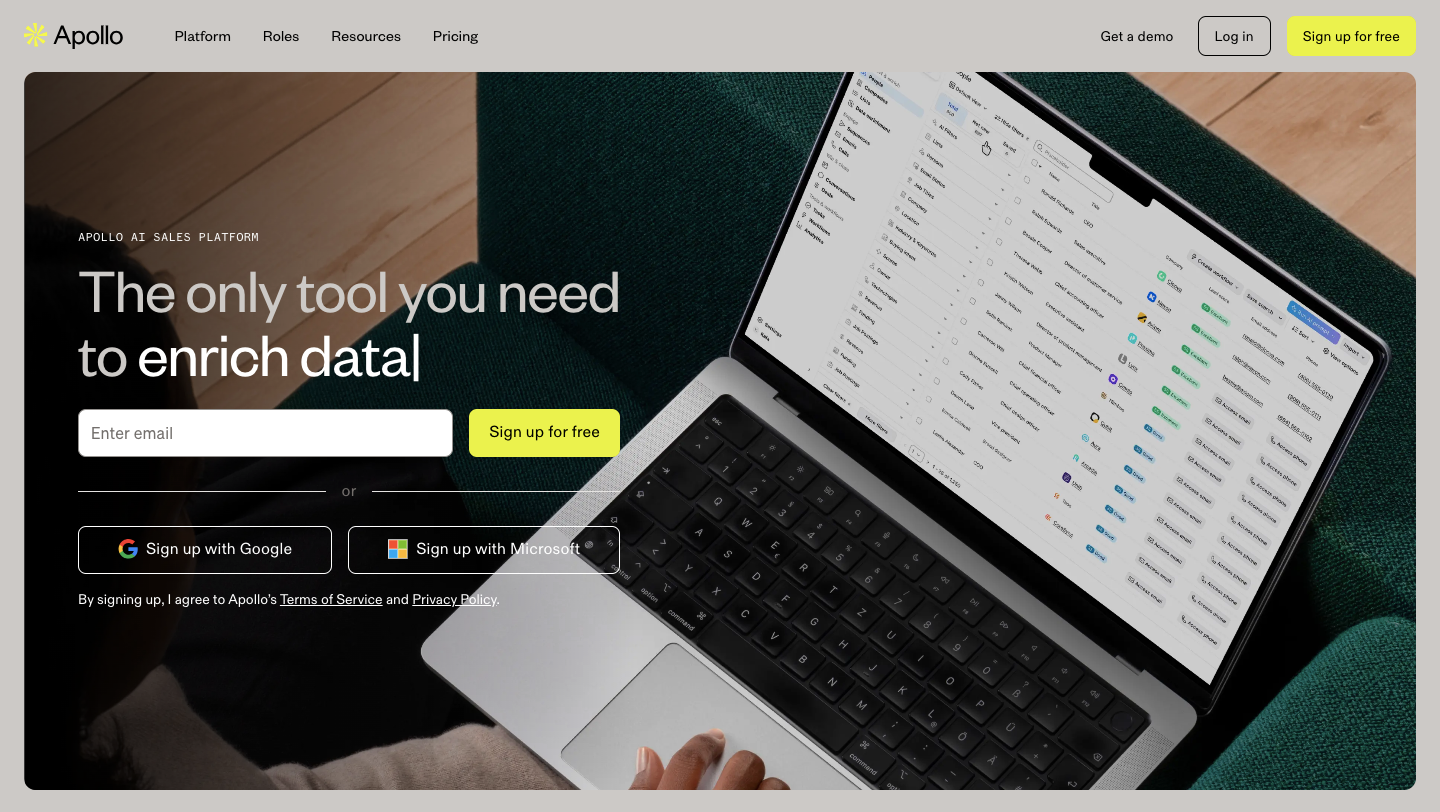
Apollo is the tool you reach for when outbound needs to move fast and stay lean. It wraps prospecting, sequencing, enrichment, and CRM sync into one system — so SDRs can go from lead list to launch without waiting on multiple vendors or duct-taped workflows.
No, it’s not as deep as a full sales engagement stack. But if you're tired of managing ZoomInfo, Outreach, and enrichment tools just to run a campaign, Apollo covers 80% of the motion — and gets reps working in hours, not weeks.
Key features
- 270M+ contact database: Built-in access to global B2B records with filters by technographics, job title, industry, and funding.
- Native sequencing: Launch personalized, multi-touch outbound flows from within the platform — no additional tools required.
- CRM integration: Syncs directly with Salesforce, HubSpot, and others to ensure prospecting workflows stay in sync with pipeline stages.
Pricing
Note: The Organization plan is only available with annual billing and a 3-user minimum, making it useful for established GTM teams looking for high-volume prospecting and enterprise-level controls.
Where Apollo shines
- All-in-one outbound engine: Combines prospecting, sequencing, and enrichment into one interface.
- Time-to-first-touch speed: New reps can go from list creation to campaign launch in minutes.
- Cost efficiency: Delivers 80–90% of the functionality of larger stacks at a fraction of the cost.
Where Apollo falls short
- Inbound enrichment is limited: Real-time enrichment and form capture aren’t its strength — better to pair with Clearbit or Default.
- Sequencing UX is basic: While functional, it lacks the polish and analytics depth of tools like Salesloft.
- Data accuracy can vary: International data and C-level coverage are less reliable and may require validation.
Customer reviews
“The interface is quite intuitive despite the plethora of things that it offers. The community, as well as the support, is quite responsive. It has become the one-stop shop for all our GTM needs.” - Divyaansh A., verified G2 reviewer
“It’s not the best tool for finding contacts or companies that fit our persona description. Lots of information needs to be updated and sequences have a high bounced rate.” - Estibaliz R., verified G2 reviewer
Who Apollo is best for
- Outbound-focused sales teams: SDRs and BDRs who need to prospect, qualify, and launch cold outreach at scale, without stacking multiple tools.
- Lean RevOps teams: Early-stage companies or resource-constrained teams that need fast results with minimal integration overhead.
Clearbit: best for real-time web enrichment & marketing intelligence
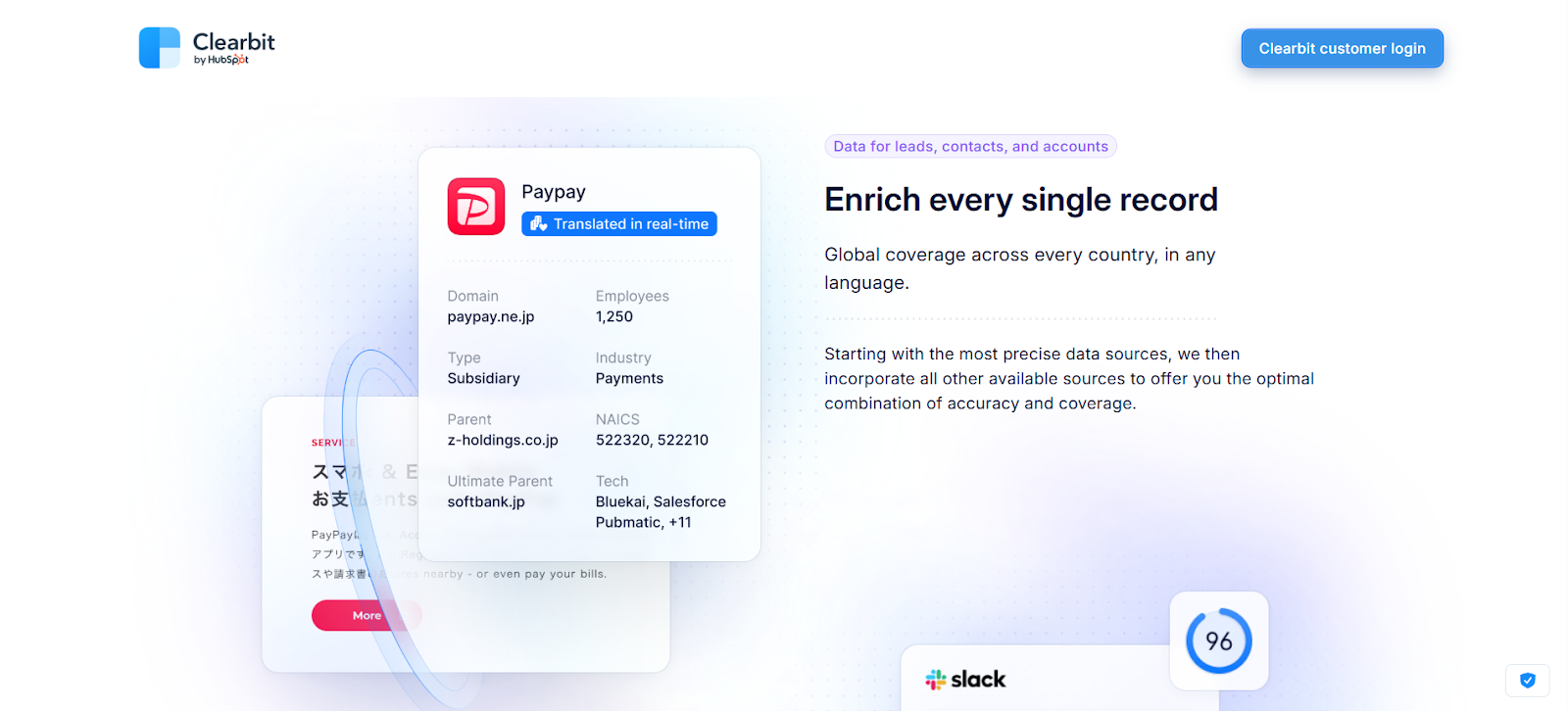
Clearbit earns its place in stacks where timing and targeting matter. It gives you real-time enrichment and IP-to-company matching, which means you can start qualifying and personalizing before someone fills out a form. That’s a big deal if you’re running ABM, paid traffic, or low-friction conversion flows.
It’s not an all-in-one platform, and it’s priced like infrastructure, not a point solution. But if you're trying to shorten forms, personalize early, or just clean your CRM before handoff, Clearbit is the data layer a lot of teams rely on to make GTM move faster.
Key features
- Reveal API: Instantly resolve IP addresses to company identities to understand and personalize for anonymous visitors.
- Enrichment API: Populate your CRM and MAP with firmographic and contact-level data the moment a form is submitted (or even before).
- Audience builder: Create real-time segments based on job title, tech stack, revenue, or other attributes — then sync to ads, email, or personalization tools.
Pricing
Where Clearbit shines
- Website intelligence at scale: De-anonymizes traffic and enables targeting before someone fills out a form.
- Strong integrations: Natively connects to Segment, Salesforce, HubSpot, Mutiny, and major ad platforms.
- First-party data activation: Unlocks the ability to personalize journeys using your own data, not rented lists.
Where Clearbit falls short
- Not built for outbound or sales workflows: No contact sequencing, routing, or meeting scheduling.
- Requires orchestration: Best used with a stack like Default or Mutiny to activate enriched data.
- High entry point: Pricing starts at ~$20K/year, making it less accessible for early-stage teams.
Customer reviews
“This is the second company I've been at where I've used Clearbit, and I recommend it to virtually everyone I speak with, as it should form an integral part to any GTM organization's tech stack.” - verified G2 reviewer
“The annual licensing cost is outrageous. This means that smaller companies and independent agents will most likely be unable to use Clearbit, and that's unfortunate.” - Stacy V., verified G2 reviewer
Who Clearbit is best for
- Data-driven marketing teams: Especially those running ABM, intent-based retargeting, or real-time personalization.
- Revenue teams with strong GTM stacks: Clearbit excels as an enrichment layer when paired with tools like Default, Segment, or Mutiny.
MadKudu: best for predictive lead scoring & funnel segmentation
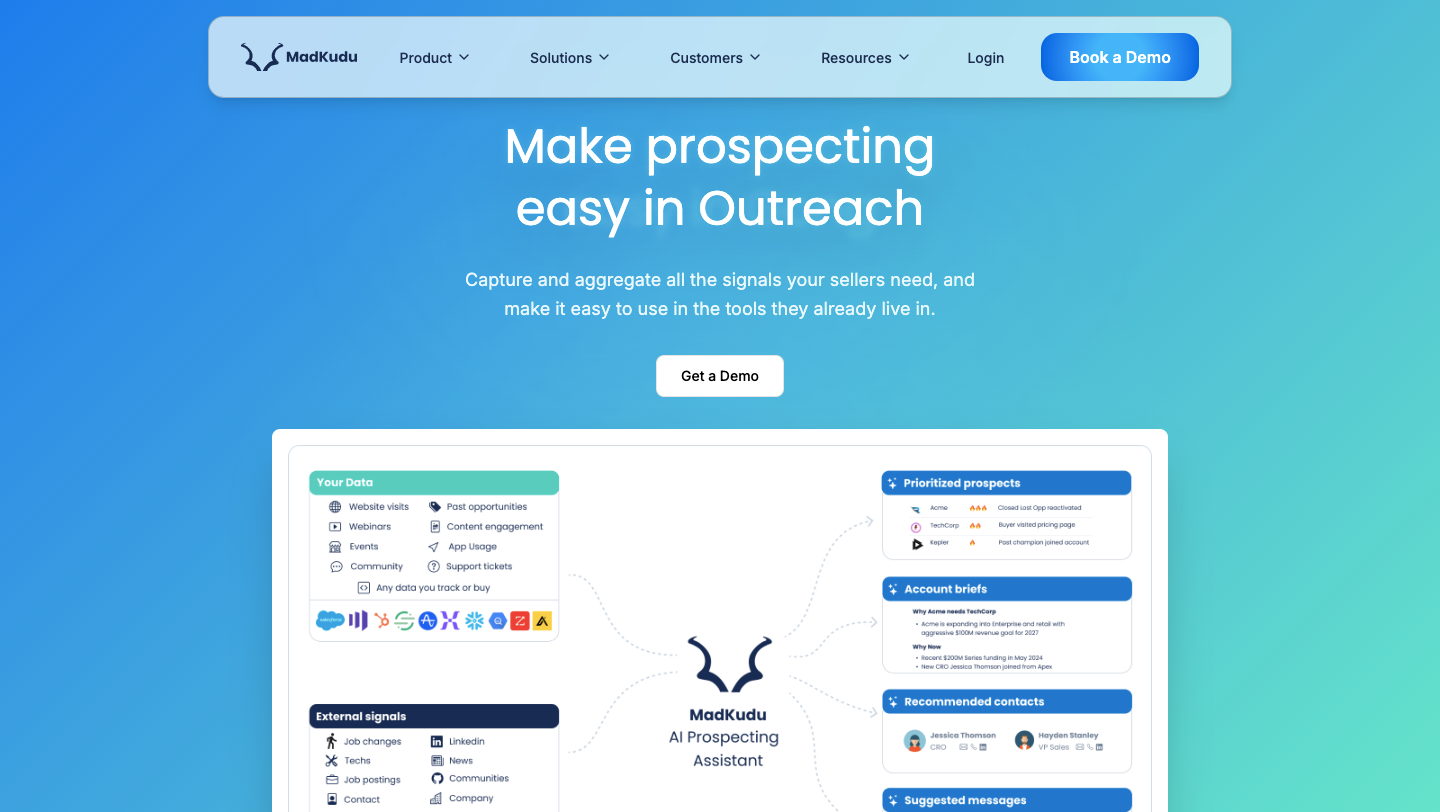
MadKudu is what you reach for when lead volume is high and noise is a problem. Unlike static MQL models or basic point-based rules, MadKudu uses machine learning to score leads based on real conversion data — combining firmographics, product signals, and historical CRM activity to predict who’s most likely to buy.
It’s built for PLG and inbound-heavy funnels where sales can’t chase every hand-raiser. If your data’s clean and your ops team can activate it, MadKudu turns lead prioritization into a repeatable, system-level advantage.
Key features
- Predictive scoring engine: Surfaces high-converting leads using trained models on historical performance and real-time engagement.
- ICP modeling: Dynamically maps inbound leads against your ideal profile using firmographic, behavioral, and product usage signals.
- Segmentation + sync: Syncs scores and segments to Salesforce, HubSpot, or MAPs to trigger workflows, campaigns, or routing.
Pricing
Where MadKudu shines
- Lead triage at scale: Ideal for teams receiving more leads than sales can handle — especially in PLG or high-velocity inbound environments.
- Dynamic prioritization: Unlike static scoring tools, MadKudu updates scores in real time as user behavior changes.
- Cross-funnel intelligence: Connects marketing, product, and sales signals to paint a clearer picture of buying intent.
Where MadKudu falls short
- Requires clean historical data: Without strong CRM hygiene and engagement tracking, scoring accuracy suffers.
- Limited transparency for non-technical teams: The model can feel like a black box without RevOps and data science collaboration.
- Not a full GTM suite: No contact enrichment, outreach sequencing, or meeting booking — best paired with tools like Default or Apollo.
Customer reviews
“MadKudu surfaces only the best prospects to our sales team, so they can focus on our highest value leads. MadKudu integrates with our existing tech stack, powering our existing workflows, making it a seamless connection.” - Kim V., verified G2 reviewer
“More on the difficult side when using it and figuring out to ease. sometimes there's not enough data to use.” - verified G2 reviewer
Who MadKudu is best for
- High-volume GTM teams: PLG, freemium, and inbound-heavy orgs that need to cut through the noise and act on the highest-intent leads.
- RevOps leaders with mature data: Teams who already track solid funnel and product engagement metrics, and want to act on them programmatically.
Chili Piper: best for calendar booking and rep distribution
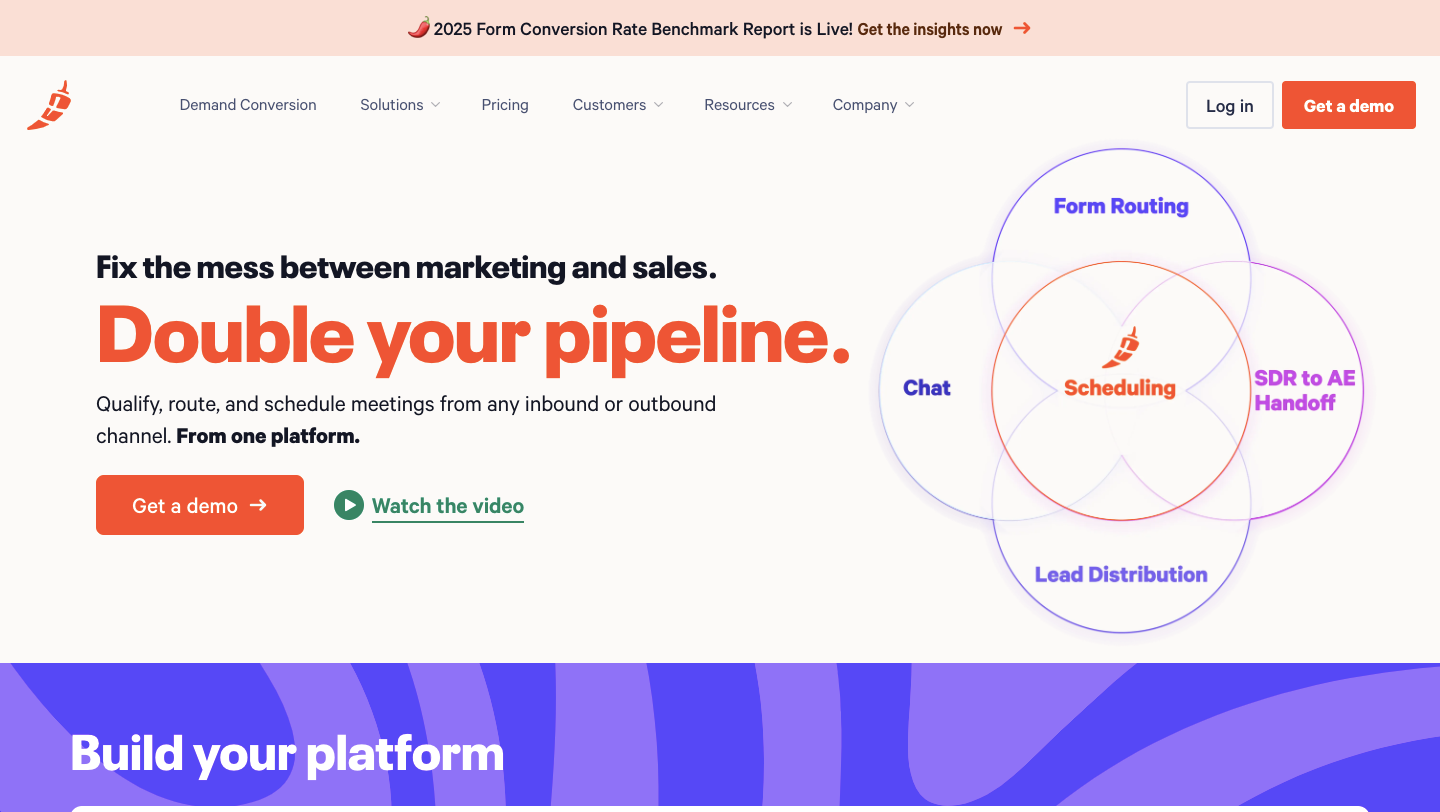
Chili Piper solves one piece of the inbound puzzle: getting leads onto calendars — fast, and with the right rep. It’s not an enrichment or routing platform. It assumes your lead is already qualified and helps you automate the handoff without clogging up inboxes or CRM workflows.
Useful for round-robin flows, regional coverage, or paid campaigns where every qualified lead needs to hit a booking link without delay. It’s not built to own the full inbound motion — but for scheduling, it does exactly what it says on the tin.
Key features
- Instant booking from forms: Add a scheduler to your form confirmation step so qualified leads can book without waiting for a follow-up.
- Rep assignment via CRM rules: Route meetings based on territory, ownership, or availability using CRM field logic — no need for custom flow setups.
- Calendar and CRM sync: Meetings sync to Salesforce or HubSpot automatically, maintaining attribution and rep accountability.
Pricing
Note: Chili Piper pricing depends on your CRM and the number of products used. Discounts apply when bundling: 4+ tools drop the cost to $27/user/month, but platform fees remain based on usage.
Where Chili Piper shines
- Reliable booking logic once leads are qualified: If your inbound motion already handles enrichment and routing, Chili Piper automates the final step — assigning the right rep and locking in time.
- Territory and ownership-aware scheduling: It’s built to respect CRM assignment logic, making it especially useful for shared queues, round-robins, and geo-based handoffs.
- Strong calendar-to-CRM integration: For teams who’ve dealt with calendar tools breaking attribution or duplicating contacts, Chili Piper helps keep meetings cleanly tied to pipeline — without manual cleanup.
Where Chili Piper falls short
- No built-in enrichment: Chili Piper only routes and books — you’ll need tools like Clearbit or ZoomInfo to pre-fill lead data.
- Not designed for outbound: There’s no sequencing, prospecting, or cold outreach functionality.
- Setup can require RevOps lift: More advanced routing flows need careful config and ongoing maintenance.
Customer reviews
“Chilli Piper fills a gap for us that our CRM can't. CP allows us to set up complex rules on our contact forms so that we can redirect our customers to the correct product expert.” - Lori J., verified G2 reviewer
“The UI where you maintain your queues and other settings is really complex, and sometimes it feels that you need to do the same tasks in so many places to get things done. The UI lacks a "save" button, and action history, so in a case of a human error, the troubleshooting takes ages.” - Senni N., verified G2 reviewer
Who Chili Piper is best for
- Inbound-heavy GTM teams: Especially those running paid campaigns or using high-intent form flows.
- Companies focused on speed-to-lead: Who want to remove friction from the handoff process without reinventing their CRM.
Tray.io: best for stitching GTM systems together with custom workflows
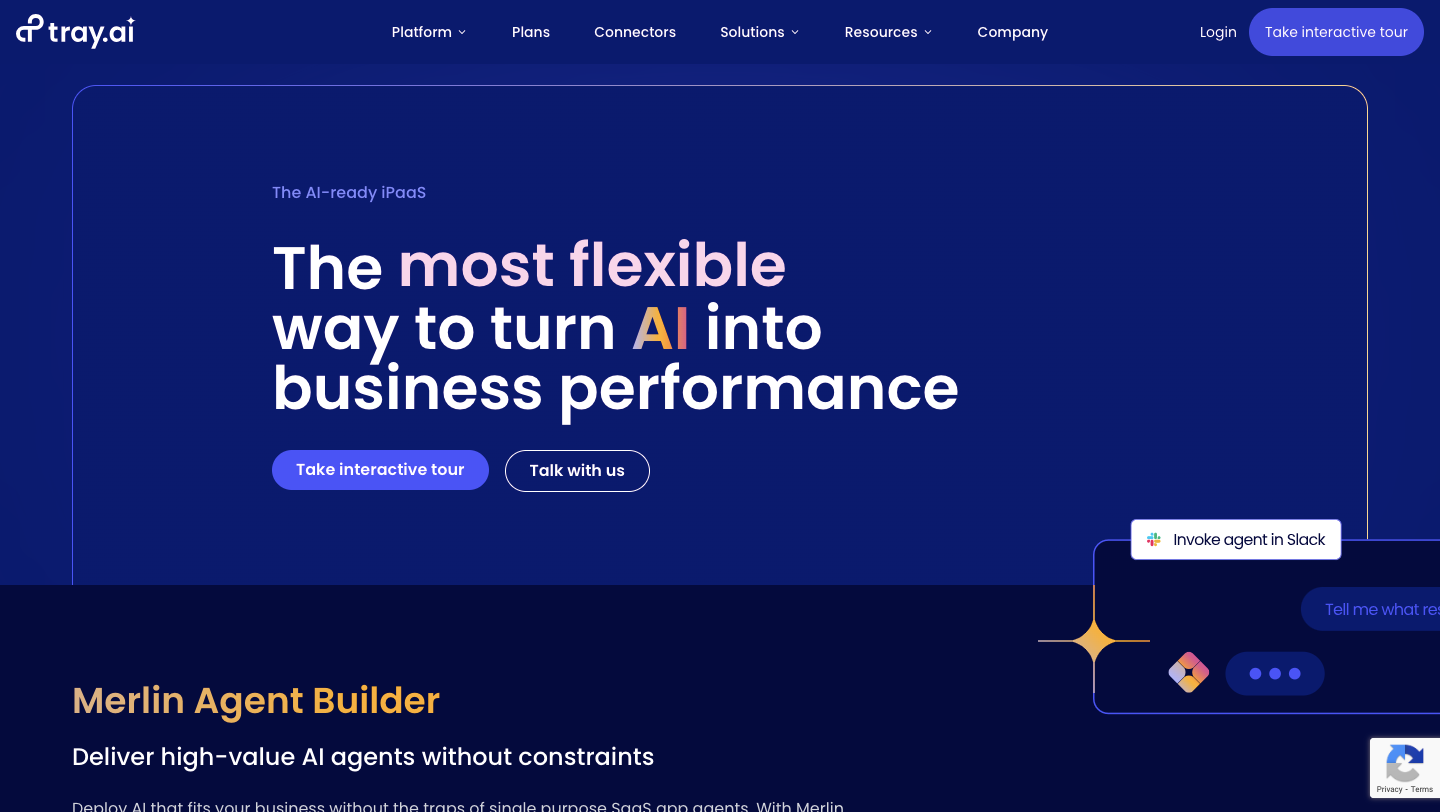
Tray.io is a low-code automation platform designed for teams who’ve outgrown Zapier but aren’t ready to commit dev resources to full integrations. It’s best used as middleware: connecting CRMs, MAPs, ad platforms, and ops tools using custom, drag-and-drop logic.
It excels when your GTM stack spans multiple disconnected systems and you need to unify them with conditional flows — think webhook triggers, API polling, and multi-step syncing. That said, Tray isn’t purpose-built for real-time lead orchestration. It’s powerful infrastructure, but it requires RevOps muscle to configure, monitor, and maintain.
Pricing is custom, based on workflow volume and feature depth.
Segment: best for customer data infrastructure
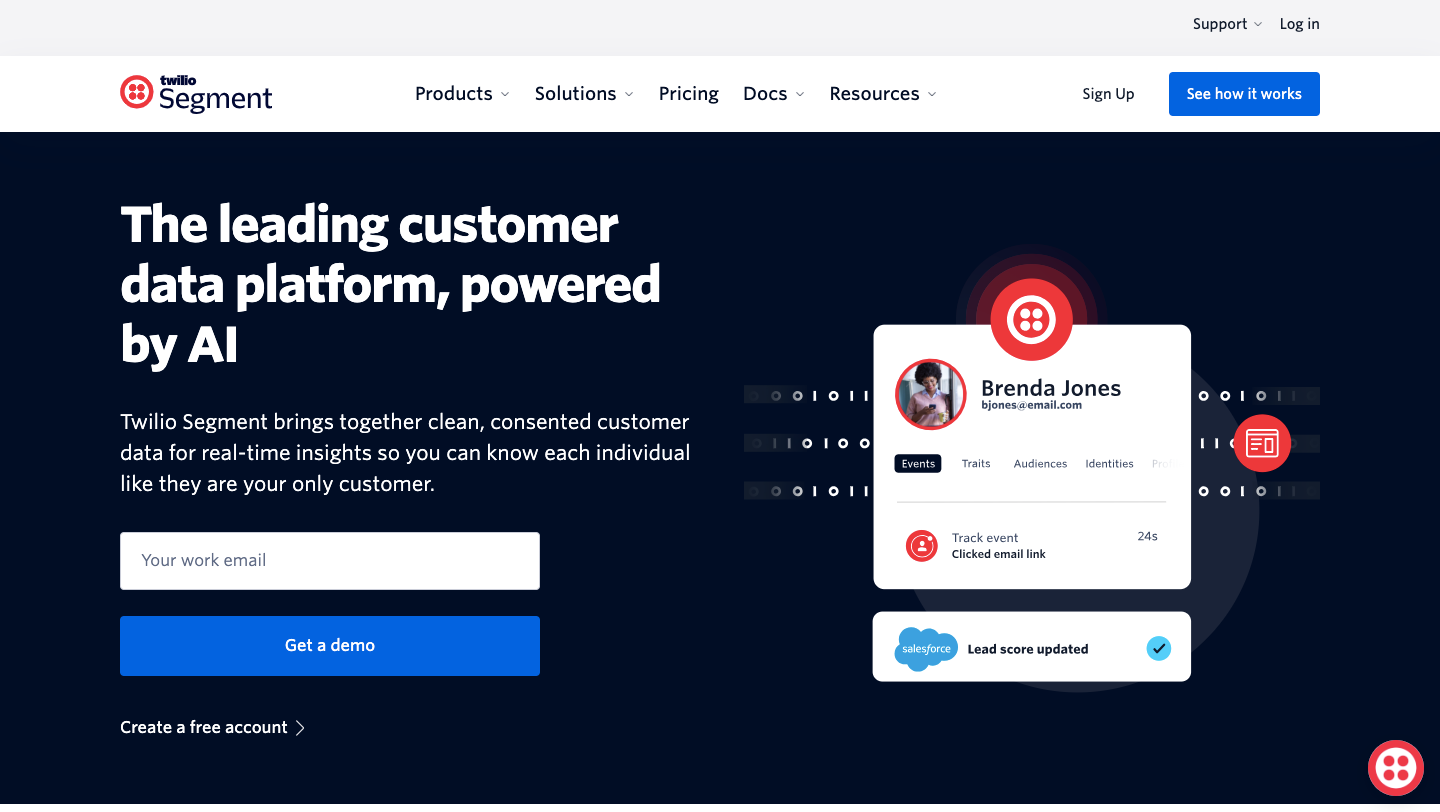
Segment gives GTM teams a unified layer to track, transform, and route customer data across tools — from product usage to website behavior and CRM updates. It acts as the source of truth for user activity, enabling more accurate segmentation, scoring, and targeting.
It’s a strong fit for PLG companies, personalization-heavy marketing teams, or anyone frustrated by data silos between product, sales, and marketing. Connections (its core product) starts free, with paid plans from $120/month. More advanced CDP features like Unify and Engage require custom pricing.
Segment isn’t a campaign tool, but it powers smarter campaigns by making the data flow clean and fast.
LeanData: best for Salesforce-native routing logic and rep assignment
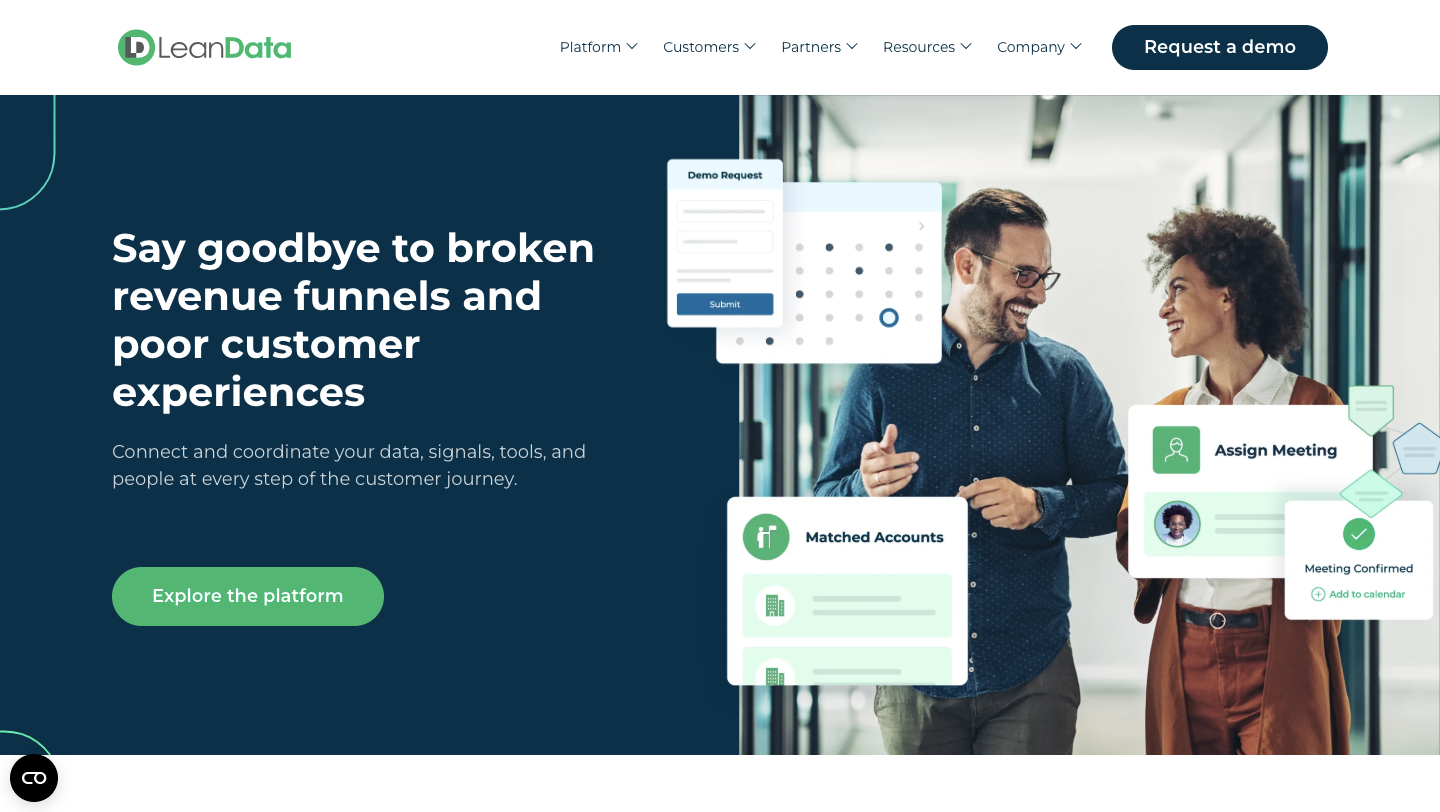
LeanData lives inside Salesforce and helps RevOps teams manage complex ownership models — including territories, round-robins, overlays, and ABM assignments. It’s a rules-based routing engine that uses CRM fields and objects to direct leads and contacts to the right owner.
It’s especially useful in orgs where rep mapping is intricate and changes often — and where routing accuracy matters more than speed. But LeanData only kicks in after a record hits Salesforce, so it doesn’t handle real-time enrichment, form routing, or scheduling. Setup requires admin oversight, but once tuned, it’s a stable backend layer for CRM assignment.
Pricing is fully custom.
UserGems: best for buyer intent tracking via job changes
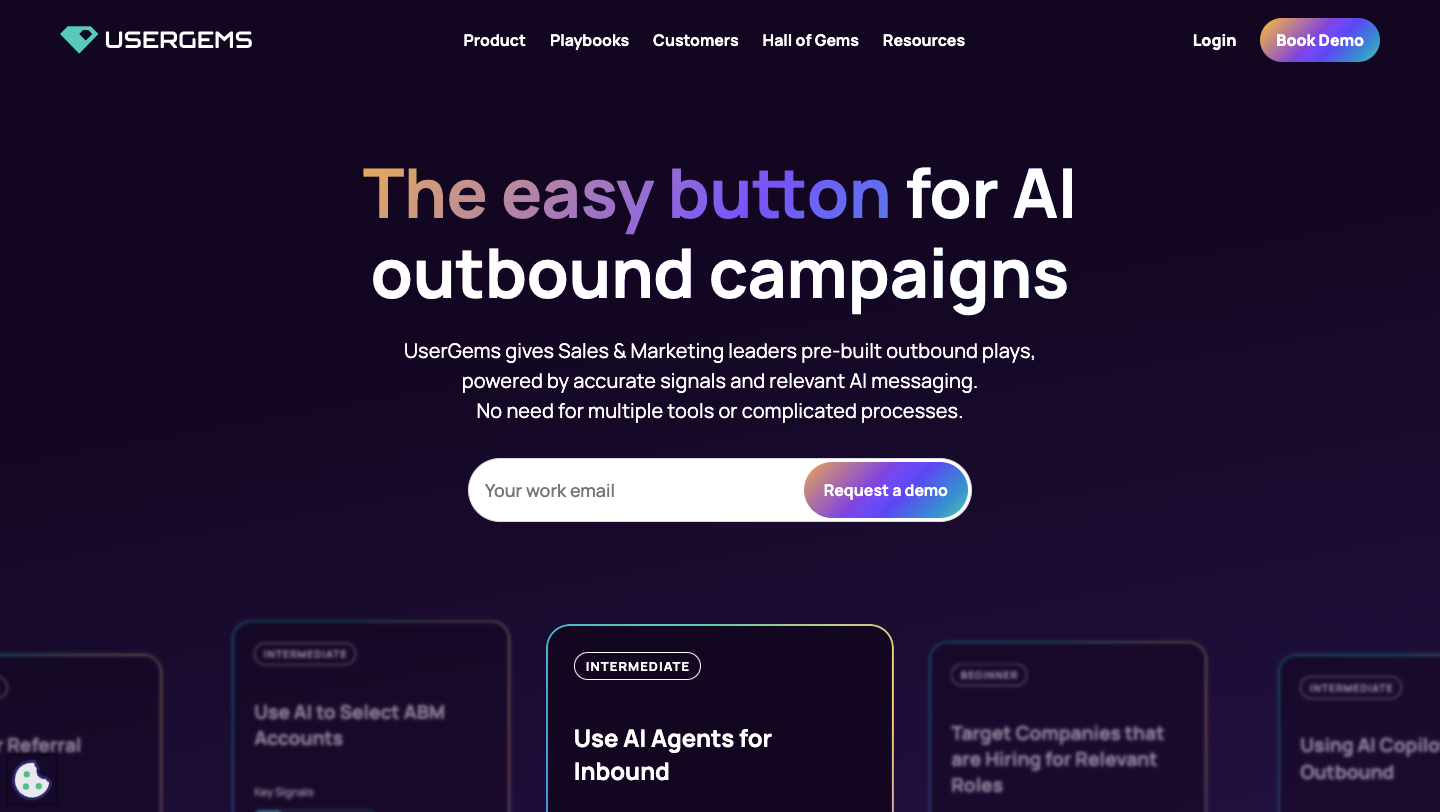
UserGems tracks when your past champions or ideal personas change jobs — then alerts your team so you can re-engage at their new company. It’s a unique intent signal that taps into relationships, not just account behavior, and helps surface warm pipeline opportunities traditional tools miss.
It works well in long sales cycles, high-ACV deals, or any motion where buyer familiarity shortens the path to revenue. UserGems integrates with Salesforce, Outreach, and sequencing tools to auto-create leads, trigger playbooks, and support fast outreach.
Pricing is fully custom and based on CRM setup, team size, and volume tracked. Demo required.
Mutiny: best for website personalization at scale
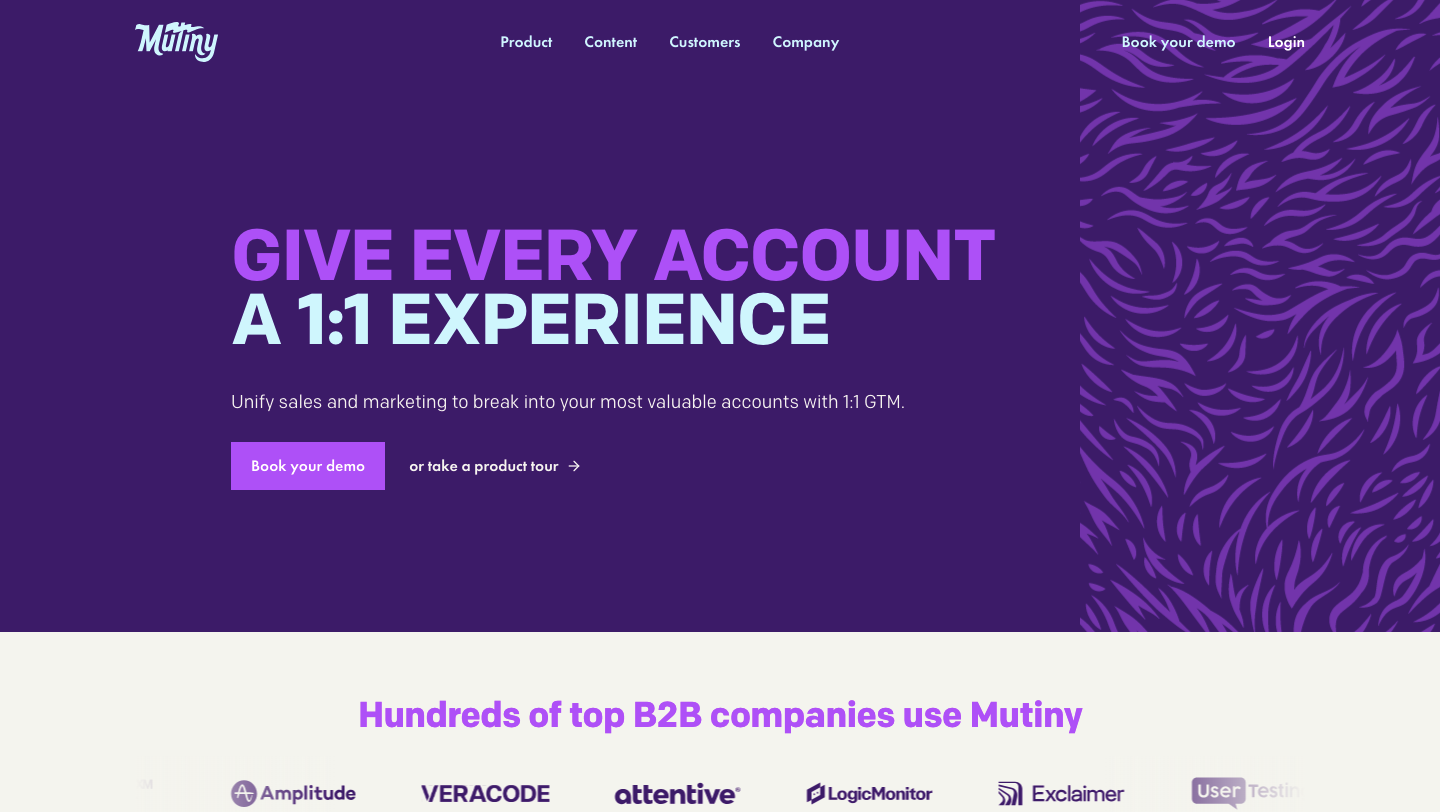
Mutiny is a no-code platform that lets marketers personalize website content — CTAs, headlines, copy blocks — based on company traits, behavior, or source. It’s built for teams running ABM, paid campaigns, or conversion-focused landing pages who want to move faster without relying on engineers.
Its integrations with CRMs, Clearbit, and ad platforms allow you to target segments with firmographic-aware messaging. Best used when your funnel is traffic-rich and you’re optimizing for demo requests or pipeline quality, not just pageviews.
Pricing is custom based on traffic, features, and team size. A strong fit for demand gen and growth marketers who own CRO.
ZoomInfo: best for B2B data enrichment & intent signals
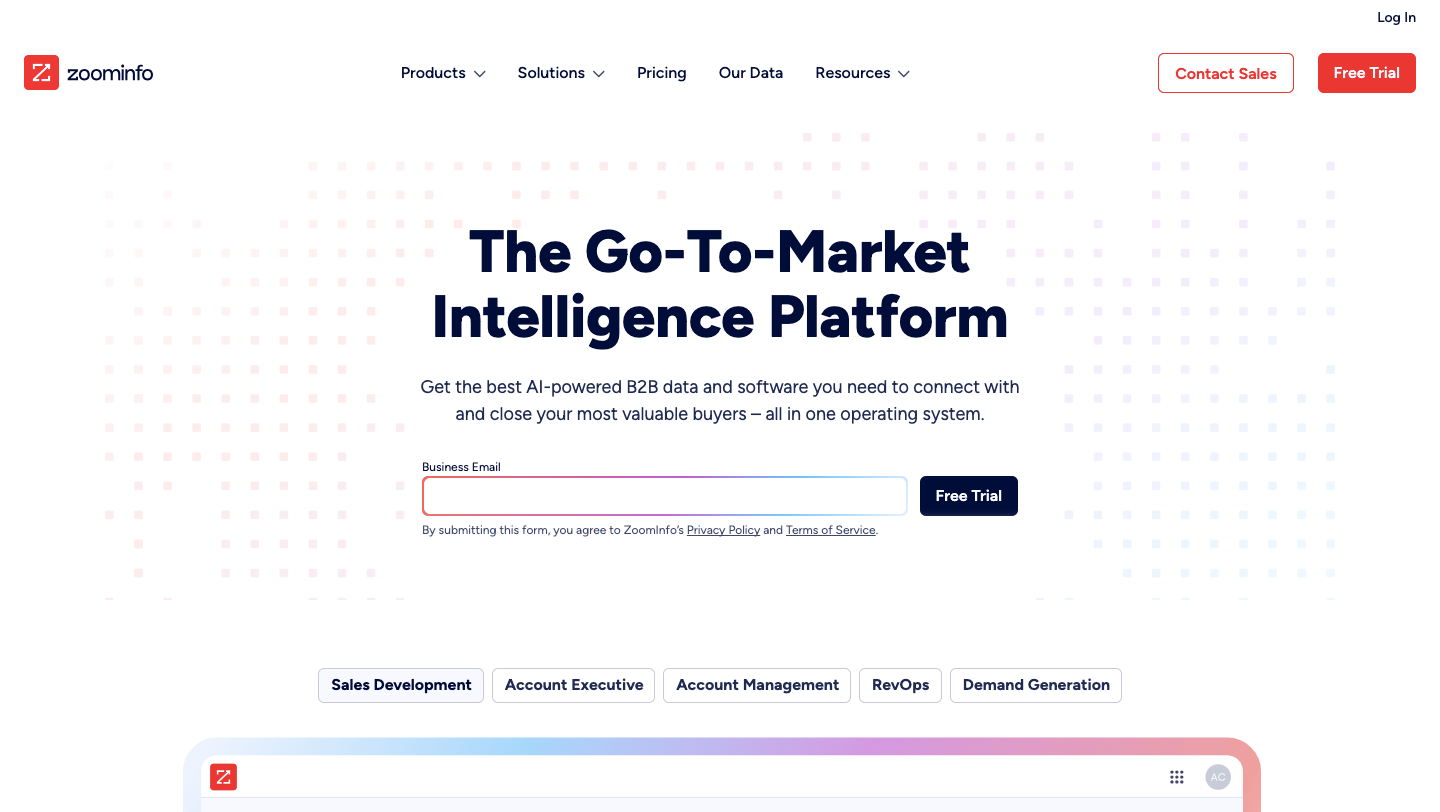
ZoomInfo offers one of the largest B2B data sets in the market — spanning firmographics, technographics, buyer intent, and verified contact info across millions of companies. It supports outbound, enrichment, and ABM workflows at scale, with integrations into Salesforce, Outreach, and more.
It’s a heavy-duty tool designed for enterprise sales motions where coverage breadth and signal volume matter. Data accuracy can vary by region or role, and setup requires admin time but for outbound teams with big targets and large TAMs, it’s a foundational layer.
Pricing is custom across Sales, Marketing, and Talent products. A free trial is available.
Breadcrumbs: best for flexible lead scoring in HubSpot or Salesforce
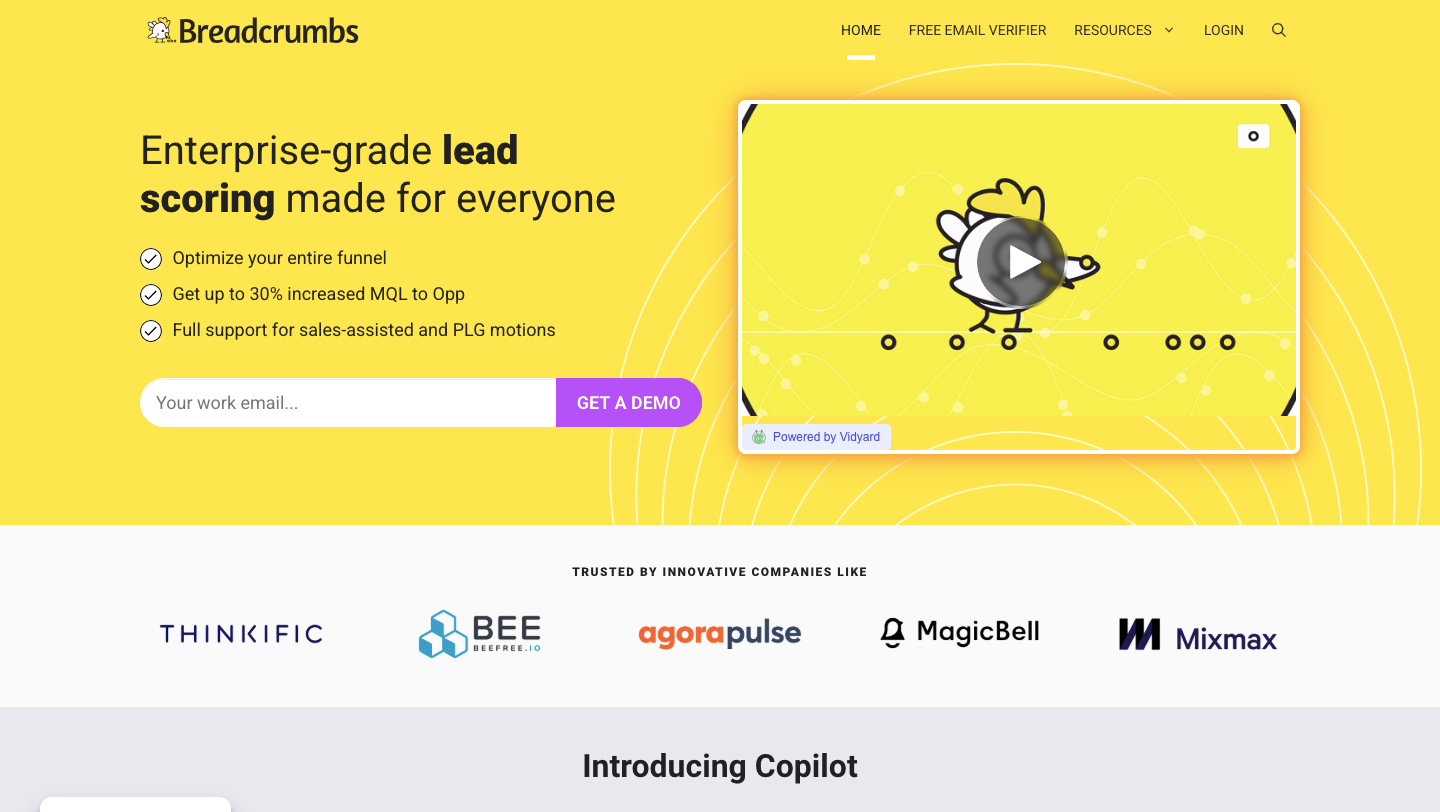
Breadcrumbs helps GTM teams score leads in real time using a mix of fit and intent signals — without relying on ML models or data scientists. It offers a visual, no-code interface to build and adjust scoring logic as your funnel evolves.
Designed for RevOps and marketing teams who want tighter control over qualification logic, it supports fast iteration and smooth CRM integration. Ideal for orgs that need more than static point-based scoring, but don’t want the complexity of predictive modeling.
Works best with HubSpot or Salesforce. Pricing is custom depending on company size, CRM setup, and data volume.
How to choose a GTM platform
Choosing the right GTM software isn’t about picking the most feature-rich product — it’s about aligning your stack to your current motion, bottleneck, and maturity. Below are five high-leverage criteria every RevOps and GTM leader should evaluate, with callouts showing how Default sets the bar.
1. Does it unify your critical GTM workflows — or multiply complexity?
When inbound breaks, it’s rarely because a tool is missing. It’s because tools aren’t working together. If your enrichment runs through one vendor, routing through another, and scheduling via yet another app — every new integration adds another point of failure.
That creates lag, blind spots, and logic that only your ops team can decipher — until it breaks.
Default sets the bar:
It’s not an enrichment tool that bolts on routing. Or a scheduler that happens to support round-robin. Default was built to run all three in sync — in one platform, with one logic layer, under one roof. Fewer hops. Fewer breakpoints. More control.
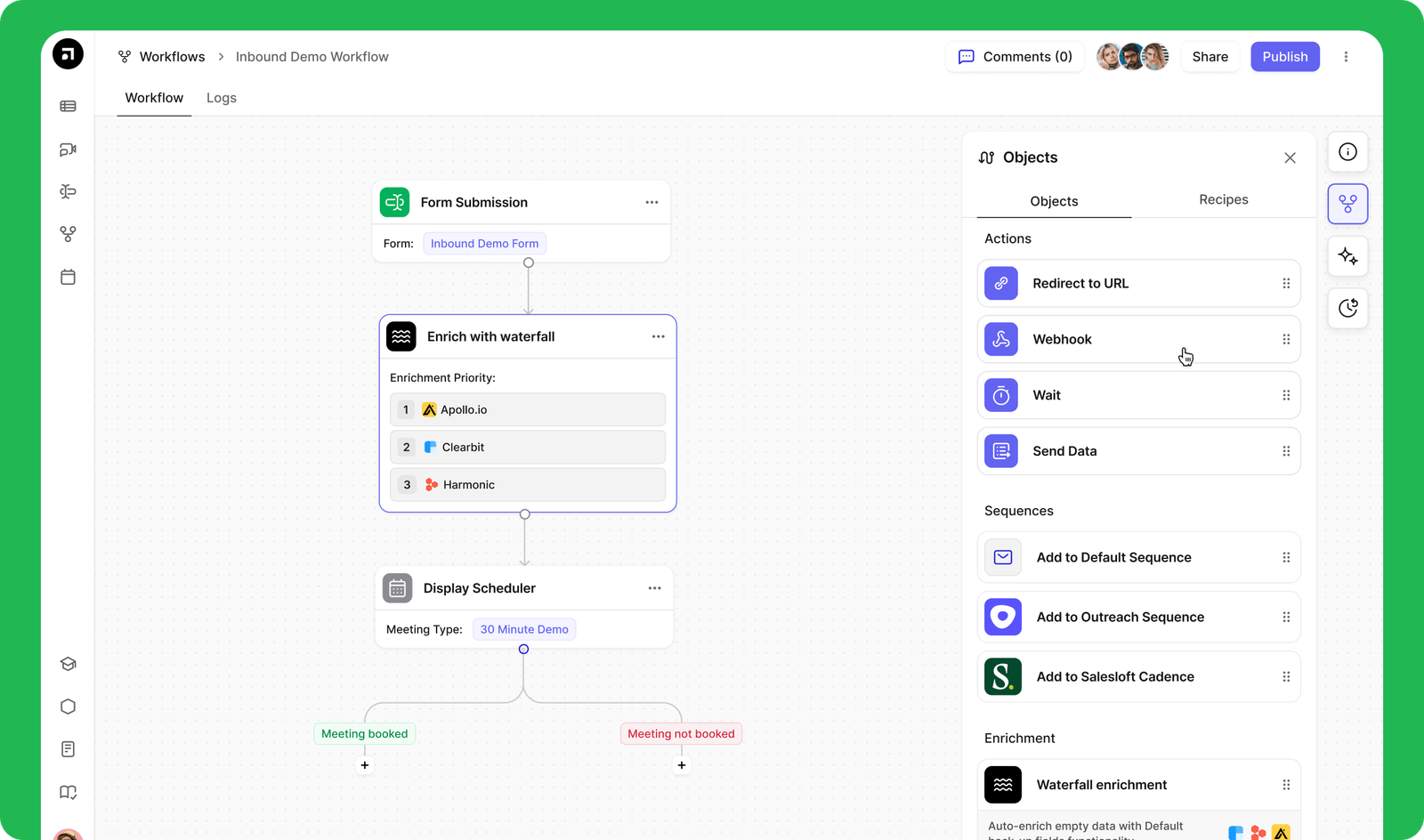
2. Does RevOps actually own it — or just configure it?
Too many “no-code” platforms still require workarounds, dev support, or buried system logic no operator wants to touch. If every update needs a developer, your motion won’t scale — it stalls.
Ownership means more than access. It means visibility, speed to iterate, and the confidence to ship changes without risk.
Default sets the bar:
Built for operators, not builders. Drag-and-drop logic, version history, inline error detection, and CRM-native mapping — all in one UI. No tickets. No Zapier. No post-it notes explaining what each flow does.
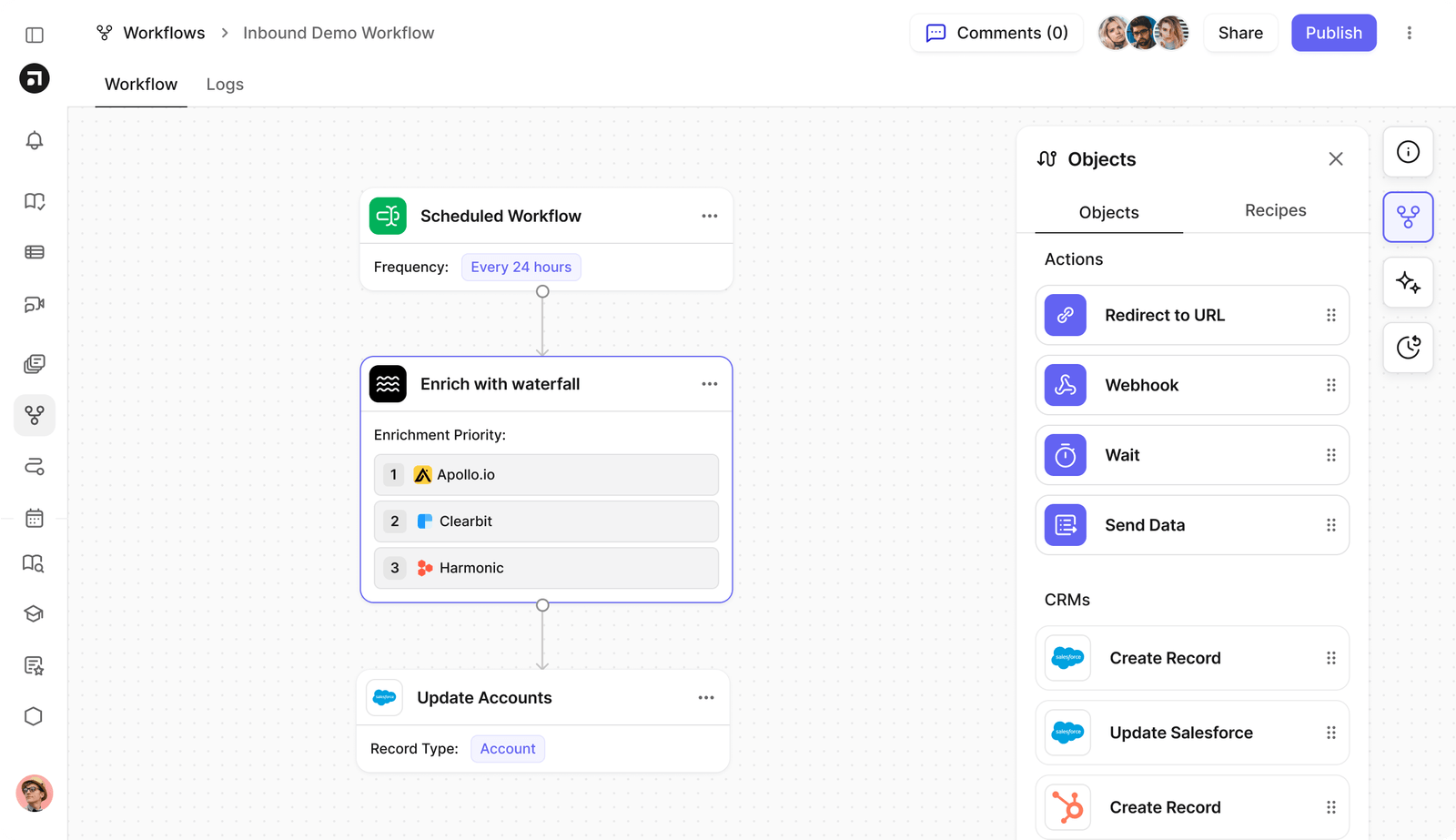
3. Does it actually reduce time-to-meeting — or just delay it more cleanly?
Capturing a lead is easy. Converting it before intent fades? That’s the hard part.
Some platforms help you organize handoffs. Fewer help you accelerate them. If enrichment runs late, routing adds lag, and scheduling depends on rep follow-up, you’re already behind.
Default sets the bar:
From form fill to booked meeting, everything happens in parallel — not sequence. Enrichment, routing, and calendar logic run the second a lead converts. No queue, no friction, no lost momentum. Most teams see reps in live meetings within 60–90 seconds of submission.
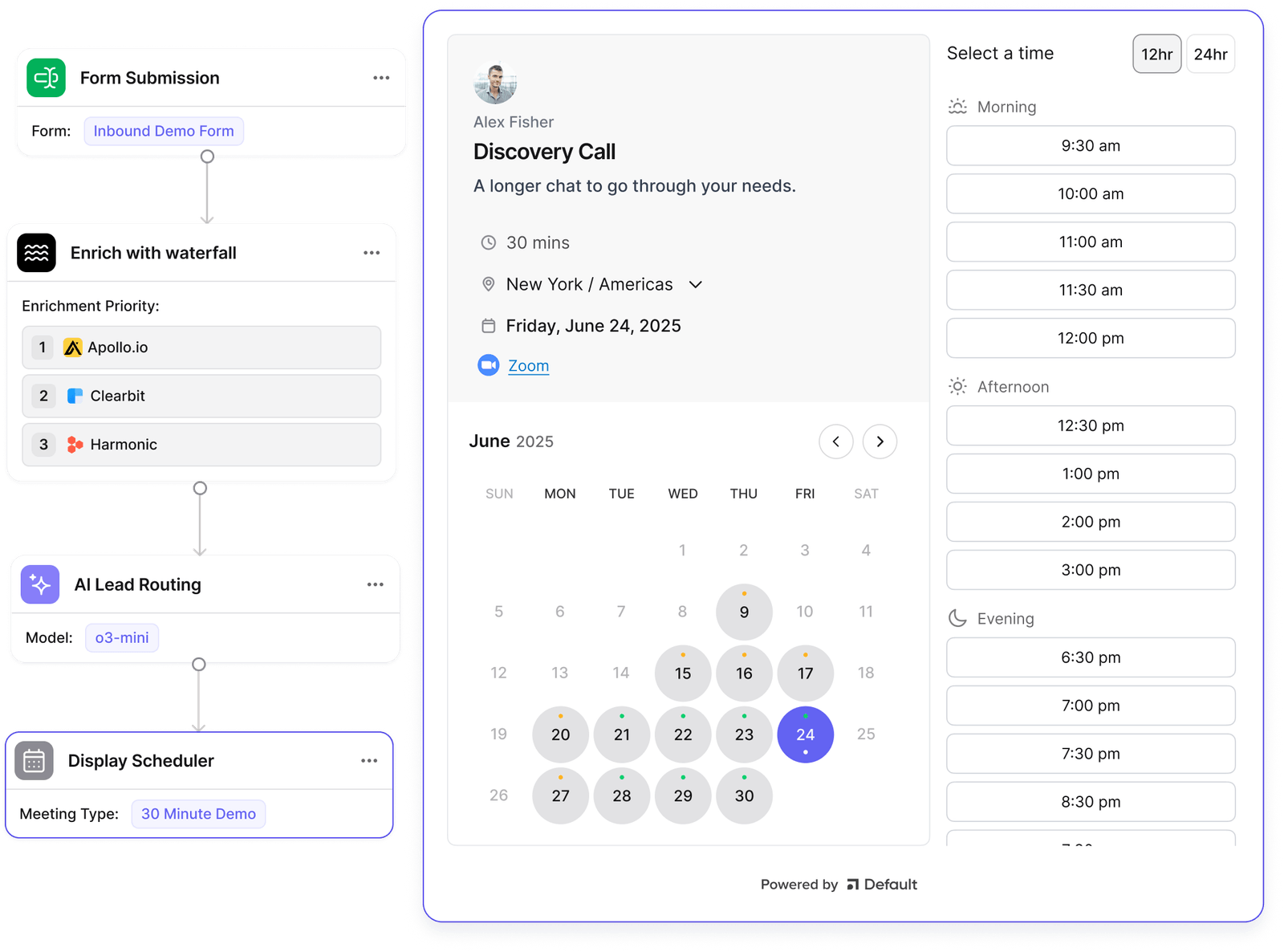
Get started with GTM software that’s built for how teams actually scale
This guide mapped out the most effective tools for solving common GTM friction points — from targeting and enrichment to lead scoring and booking.
Each platform plays a role. But as you scale, the challenge shifts: it’s not just what each tool does — it’s how well your systems move together.
If your inbound motion is slowing down right where speed matters most, it’s not a tooling issue. It’s a coordination issue.
Default was built for that turning point — to give RevOps full control of the entire handoff. Not in parts. In practice.
Book your demo today to learn what clean, compounding GTM execution actually looks like.
Conclusion

Former pro Olympic athlete turned growth marketer! Previously worked at Chili Piper and co-founded my own company before joining Default two years ago.
Accelerate your growth with Default.
Revamp inbound with easier routing, actionable intent, and faster scheduling















.png)


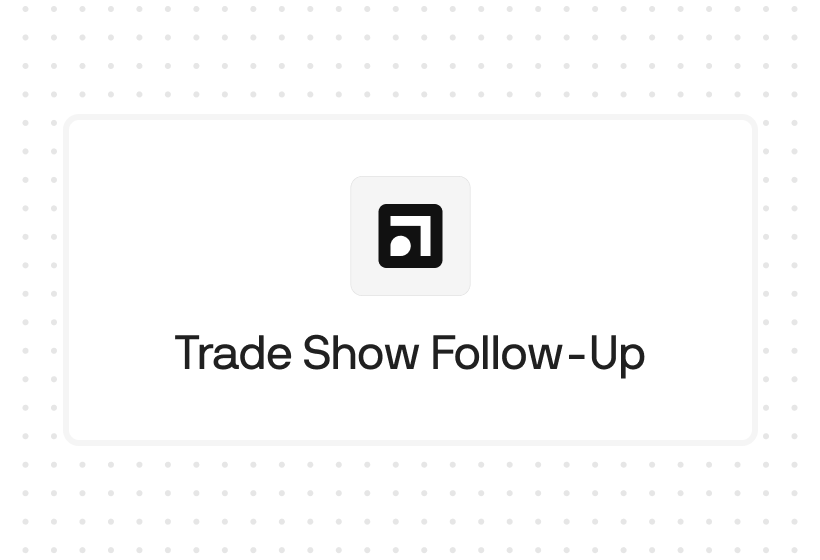
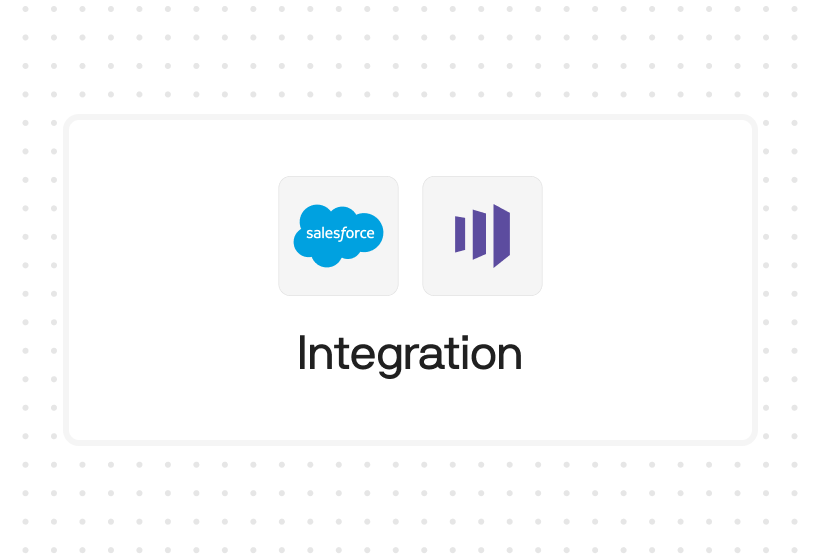




%201.svg)



.svg)





%201.svg)



%201.svg)

